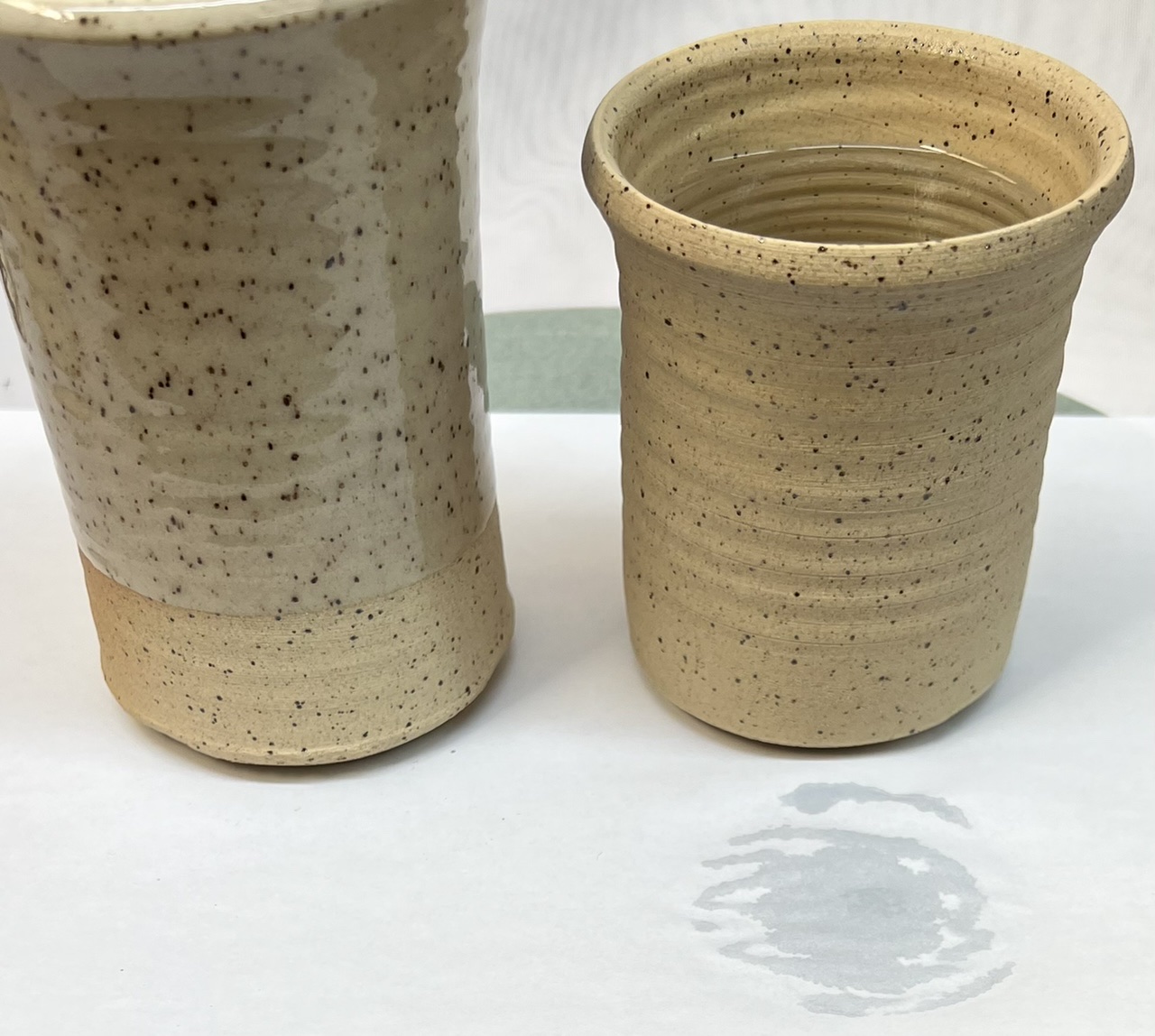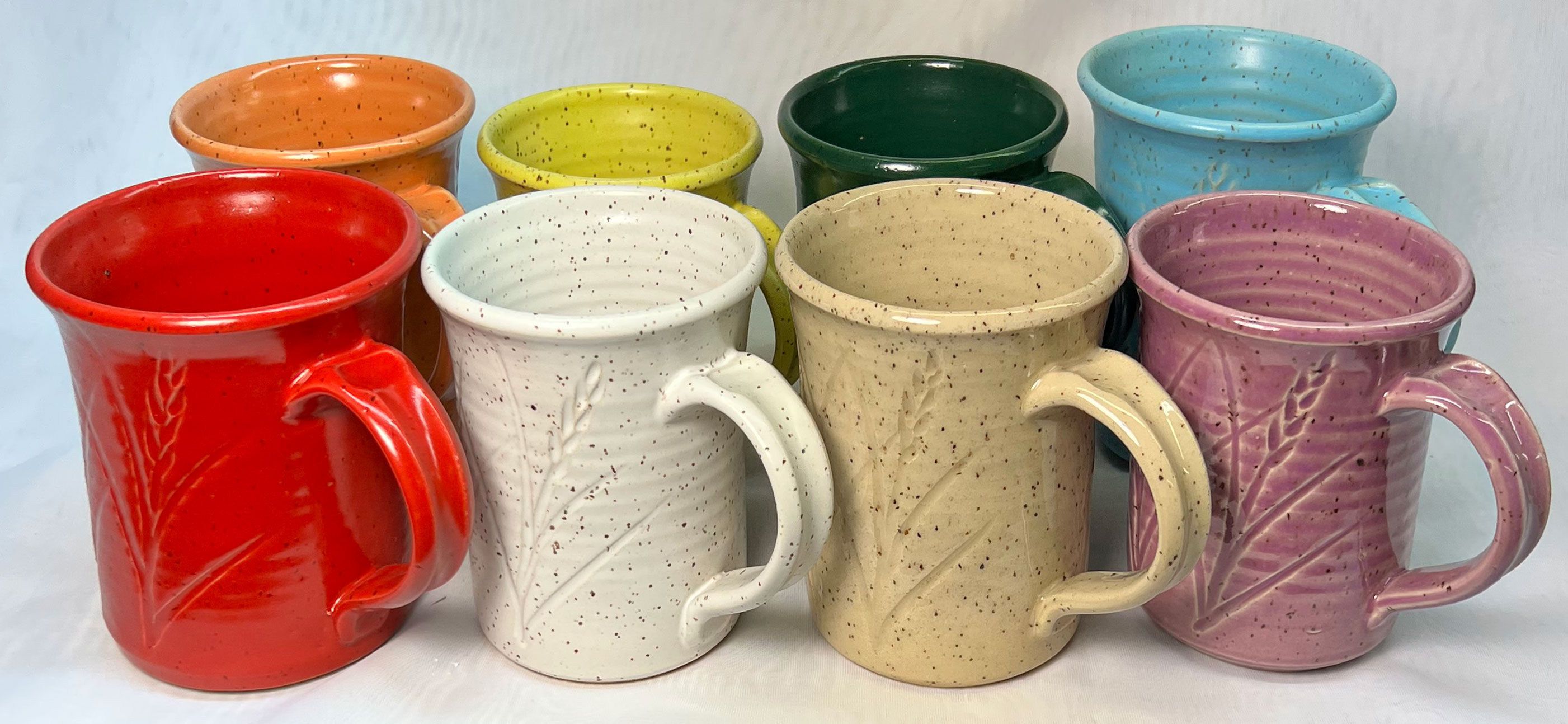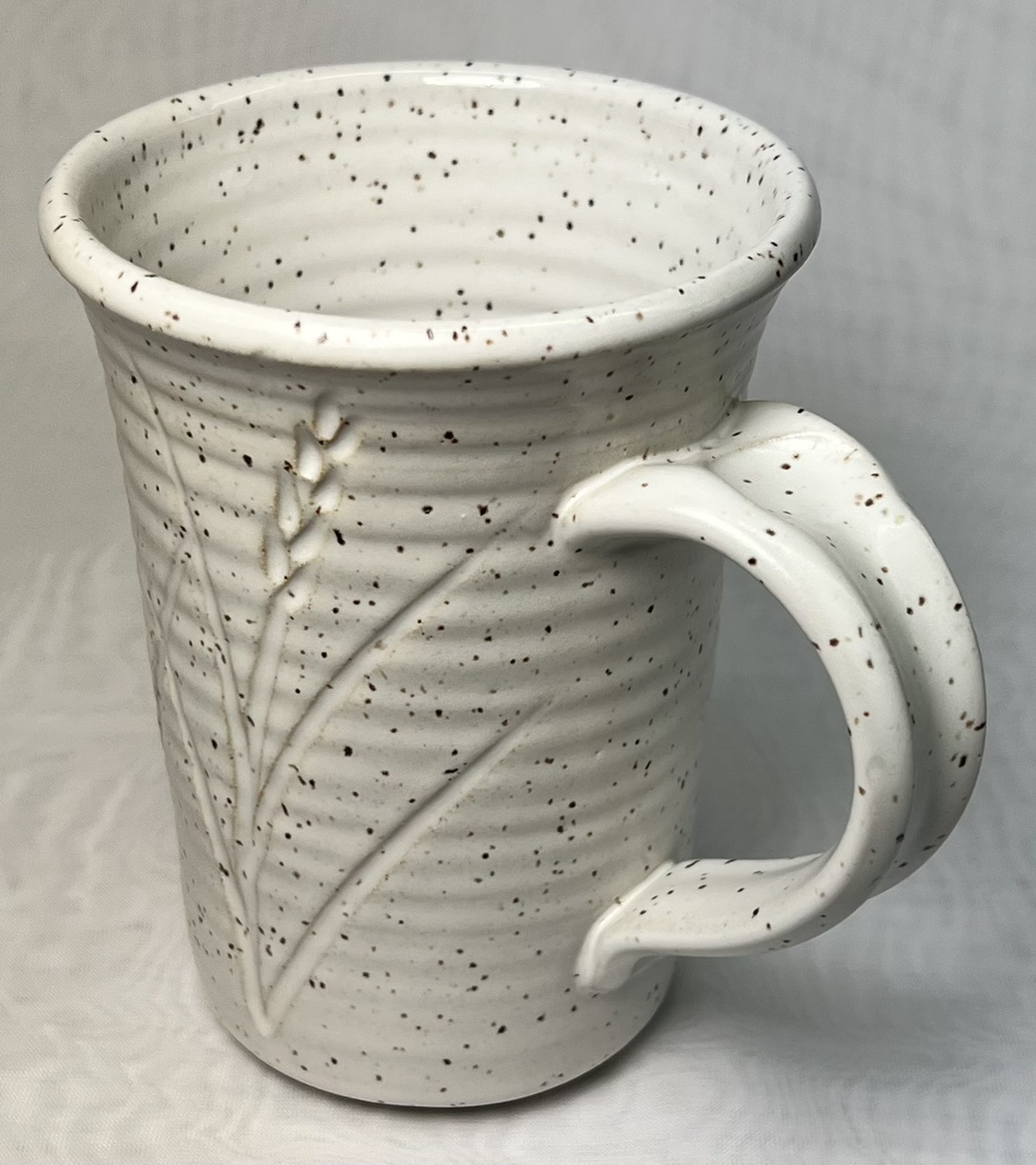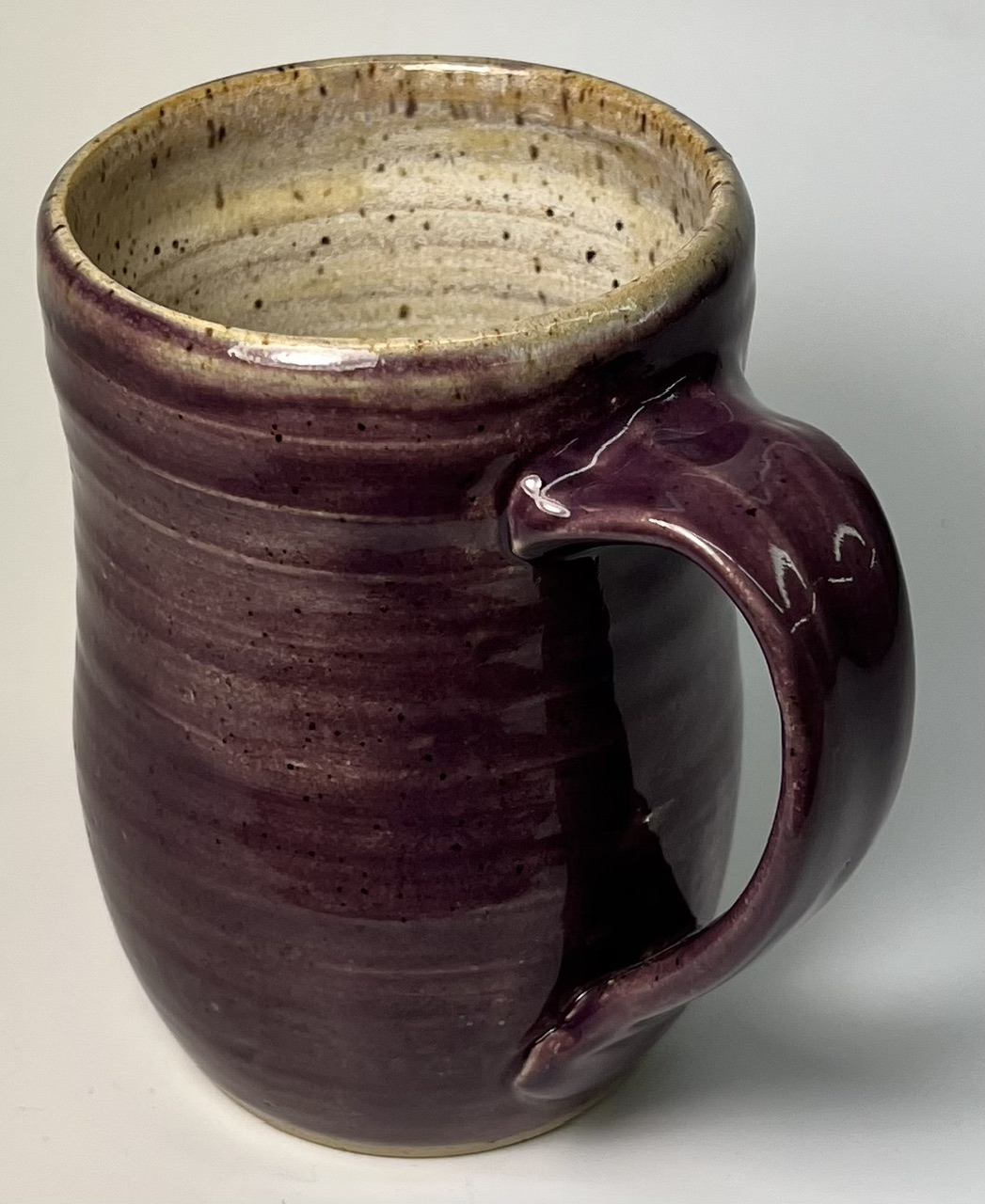M340S
This is a new version of M340S (starting in 2023). The initial runs had code numbers beginning with 7051 and 7058. The first one labelled it as "M340S REV" but the second one just as "M340S".
Description
A cone 6 stoneware, the speckled version of M340. Cartons of this are stamped “M340S REV”.
Process Properties
M340S is more plastic and stickier than the previous version. It continues to work well with our L3954B engobe. In the past, many people bought the grogged version, M340GS, as insurance against bloating. This new version eliminates that need (the grog had no other benefit).
Firing

Left: M340S REV fired at cone 6 with G2926B glaze, there is no leaking after 24 hours. Right: An unglazed piece after 24 hours. The moral: Use a glaze that does not craze.
An all-new recipe, this fires the same color as the previous M340S.
Clay bodies containing granular manganese tread a thin line between vitreous enough for strength and water tightness but being non-vitreous enough to avoid bloating (caused by the melting and gas-producing MnO particles). This body moves that line upward at least one cone from the previous M340S. If you have been firing M340S to cone 5 specifically to avoid blisters and bloating, we now recommend switching to cone 6. Even at cone 6, the margin needed to avoid blisters means that unglazed or craze-glazed pieces will leak somewhat.
Glazing

M340S REV with colored glazes fired at cone 6 using the PLC6DS schedule. The white and colored mugs are made using the G2934 base, the clear and purple one using the G2926B base.
Toxicity: the vast majority of the manganese particles are encapsulated within the clay matrix. The tiny percentage exposed at the body surface are under the glaze. It is not the manganese particles themselves that expose at the glaze surface. Rather particle surfaces that contact the underside of the glaze bleed out into it from below, doing so as a function of the glaze thickness, opacity and melt fluidity. Thus, food contact with a glass surface having isolated manganese-pigmented regions is not at all the same thing as with raw manganese metal (or a glaze having powdered manganese as a colorant, some have up to 5%).
There should be no concerns with glazes, use the same ones you have always used.
Physical Properties
Drying Shrinkage: 6.0-7.0% Water Content: 20.0-21.5% Drying Factor: C120
Sieve Analysis (Tyler mesh):
+48: 0.0-0.1% 48-65: 0.5-1.5 65-100: 3.0-4.0
Fired Shrinkage:
Cone 4: 4.0-5.0% Cone 5: 4.5-5.5 Cone 6: 5.0-6.0 Cone 7: 5.5-6.5
Fired Absorption:
Cone 4: 4.5-5.5% Cone 5: 3.0-4.0 Cone 6: 2.0-3.0 Cone 7: 1.0-2.0



